How to Salvage the Lost Paradise: Saint Martin's
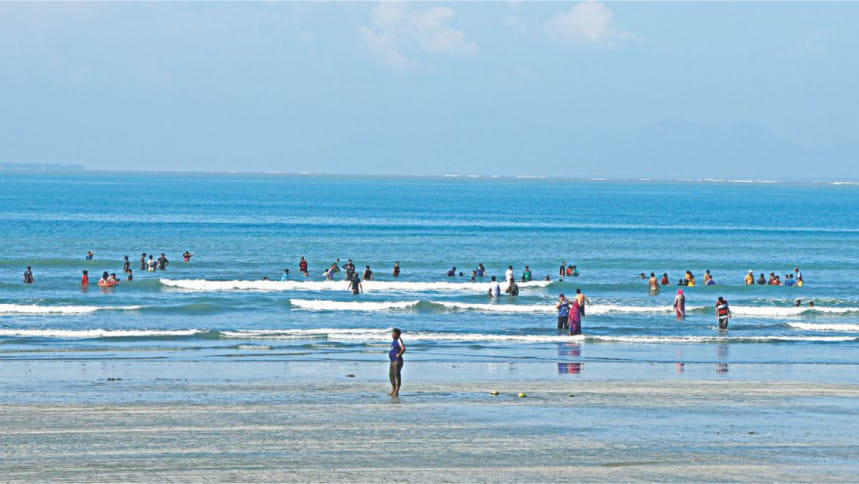
Photos: Mohammad Arju
"Bangladesh is a gorgeous damsel and the jewel in her forehead is Saint Martin's Island," a quote that rightly explains the indescribable beauty of Bangladesh's only coral island. It's sand dunes, long beach studded with natural sand stones, shoreline full of colourful corals, thickets of keya (Pandanus odorifer) trees and coconut groves have turned it into a piece of heaven on earth. However, this paradise is now on the brink of extinction.
Most of its natural sand dunes have been levelled, the keya trees are being wiped out to make way for beach side hotels and resorts, propellers of the fast seagoing tourist vessels propel the shallow sea waters so rapidly that the once blue, calm water of Saint Martin's Island is now a brownish, murky mess, full of alluvium. And, such invasion on the once peaceful island by settlers and tourists brought about a disaster on the island's most significant and original inhabitant--- the corals.
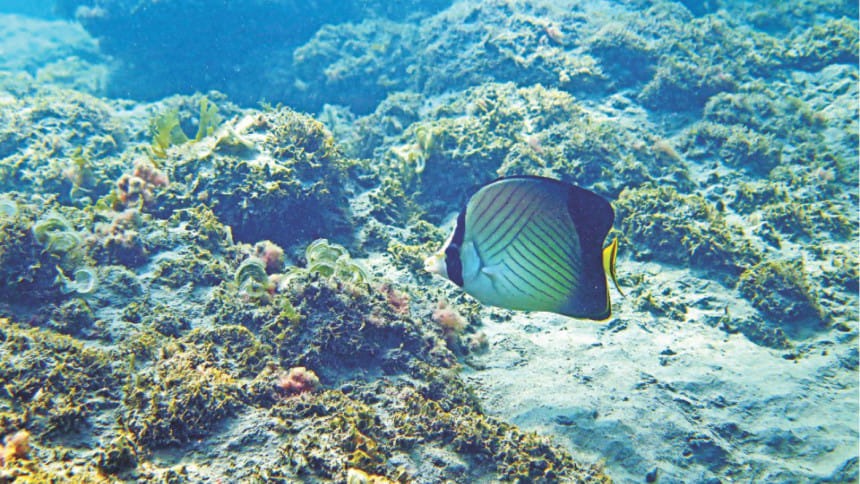
The corals, in fact, are minute marine invertebrates that live in compact colonies. The island's actual beauty is hidden beneath the warm, shallow waters, in the once colourful coral colonies which no tourists can see during their holiday trips. Although very small and sensitive to any environmental change, these corals create a unique and one of the most diverse ecosystems on earth. For their resourcefulness, coral colonies are often called rainforests of the sea.
Saint Martin's Island's coral colonies used to support diverse species of molluscs, crustaceans, endangered species of sea turtles and a huge amount of fish. Even, the coral colonies and sandstone bed of the island prevent salination of the island's natural underground rainwater reservoir which is the only source of drinking water for the inhabitants of the island. Therefore, the island's entire ecological balance is dependent on the coral colonies surrounding the eight square kilometre island populated by around seven thousand people.
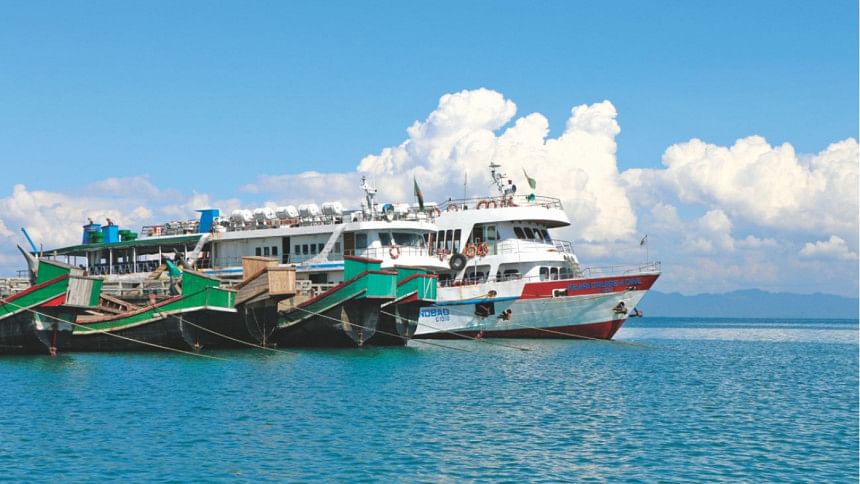
However, the most unfortunate fact is more than half of the Saint Martin's entire coral colonies has been bleached to death and now covered with algal turfs according to Save Our Sea, a marine conservation group that has been studying the island's fragile ecosystem.
According to Save Our Sea's studies, there are still at least 63 species of corals, 55 coral associated fish species, and 43 species of marine algae are fighting for survival. 67 percent of the coral colonies are already bleached to death. The tourist ships are plying the shallow water heavily, spreading ballast and bilge water, pulling up the sediments. "The entire eastern coral habitat is nearly gone. Plastic waste, untreated sewage and effluents from the hotels are making situation worse," says marine conservationist and journalist Mohammad Arju, the founder of Save Our Sea.
"Untreated waste discharged into the water causes nutrient enrichment which stimulates algae growth. These explosions of algae are destroying and replacing the coral colonies gradually. If we don't take immediate steps to preserve and regenerate the coral colonies, the rest of the remaining corals will die very soon,'' he adds.
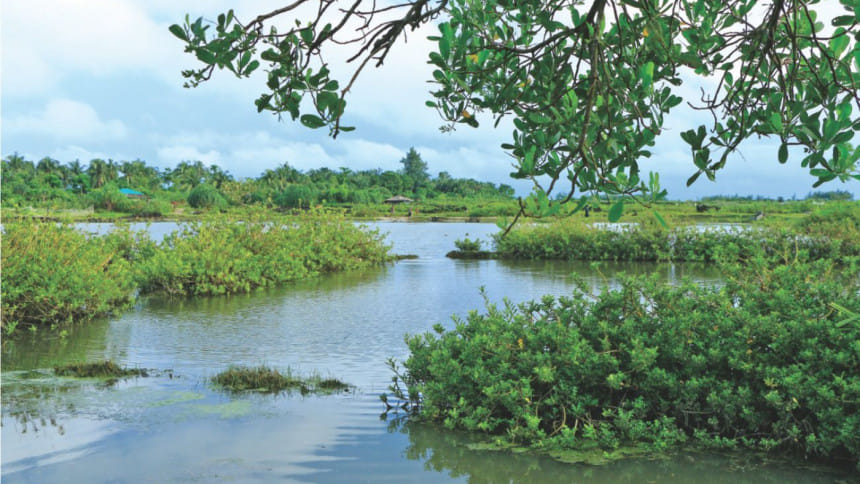
According to Bangladesh Environment Protection Act, 1995 Saint Martin's Island has been acknowledged as an Ecologically Critical Area. However, this acknowledgement is the only thing that our state has done to protect the island's fragile ecosystem. "Saint Martin's Island is not like any other ecologically critical area. As a coral island, it has its own unique characteristics. To protect the island, we must develop a separate policy for it. This should specifically include what kind of construction and developmental works are permissible in the island, dos and don'ts for the tourists, inhabitants, sailors and strict enforcement of the regulations," says Sorder Shariful Islam, assistant director of the Department of Environment's Cox's Bazaar district office.
"Due to our limited enforcement capacity, lack of coordination among different departments and negligence; many illegal establishments have mushroomed on the island. And, lack of an exclusive policy for the protection of Saint Martin's Island is now our main obstacle to take initiatives to rescue the island's flora and fauna," he adds.
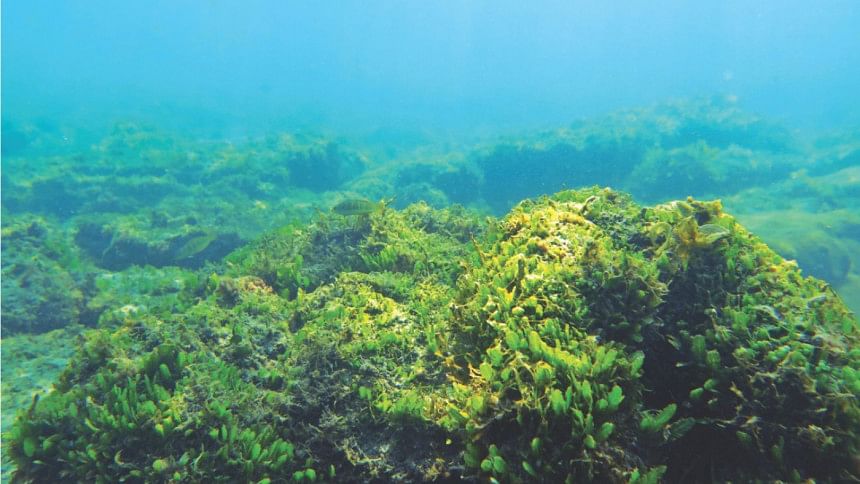
However, the existing trend of earning as much revenue as possible by cultivating unregulated tourism on the island should be stopped. India's Lakshadweep Island can be an example of conservation of coral islands by regulated tourism. According to Sordar who went to the island to get firsthand experience about coral island conservation, "Tourists need a special permit to visit the island and there are clear and strict instructions for them. The tourist carrying vessels have to anchor kilometres away from the island so that the coral reefs are undisturbed."
"And there, the tourists explore the underwater beauty of the island's vibrant coral reef by scuba diving and snorkelling thus, the island's essential coral reefs are also preserved," adds Sordar.
According to Mohammad Arju, practicing the three R's -- 'retreat', 'regenerate' and 'regulate' – will the most effective way of protecting the diverse ecosystem of coral colonies in Saint Martin's Island. As most of the corals have already been destroyed, the natural recreation of the coral colonies in Saint Martin's Island is almost impossible at present condition. So retreating, that is keeping tourists away, from the Island for at least 10 years will give time to regain the environment where most of the corals will be able to develop and grow naturally.
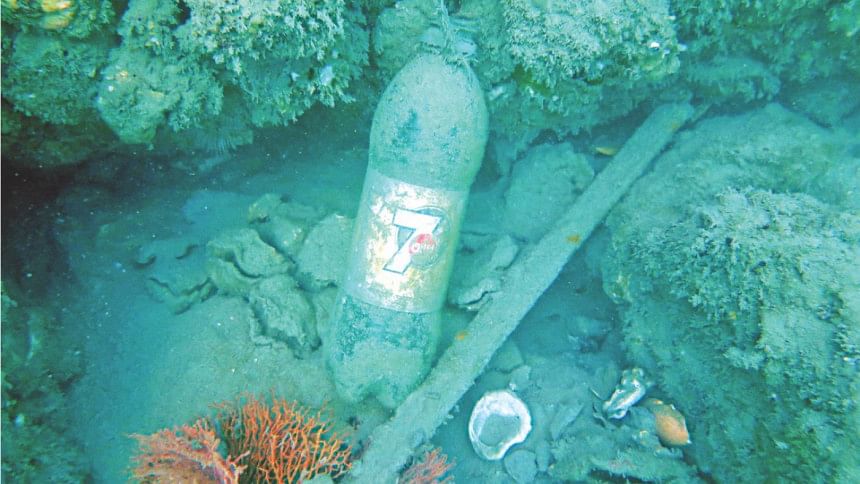
However, artificial seeding of corals should also be initiated to regenerate in the island's lost coral colonies which will also rebuild the fish population to feed the local inhabitants. Once the regeneration gets pace, regulated tourism should be started where tourists will be the main instrument to run the conservation initiatives by providing the revenue while not polluting the island by maintaining ethical tourism.
Every year from April to September, Saint Martin's Island remains closed for tourism due to storms. However, from October to February, hundreds and thousands of tourists from all over the country, and the world as well, flock to this serene island. According to Mohammad Shafioul Alam, Upazila Nirbahi Officer of Teknaf upazila under which Saint Martin's Island is a union council, the administration struggles hard to prevent over loading of the cruising vessels. Unfortunately, these tourists become deprived of witnessing the real natural wonders of the island; the vibrant underwater lives supported by corals. On the other hand, their activities on the surface have wiped out the corals and the endangered marine lives that are essential to protect the island and its people.
To save our only coral island from complete extinction, it is time to formulate a policy that will provide guidelines to retreat tourism from the island temporarily without inflicting economic loss of the inhabitants of the island. Besides, the policy has to emphasise upon artificially regenerating the coral colonies and start regulated tourism so that the tourists and local inhabitants can witness the ultimate natural wonders of the island, benefit from it, and come forward to protect this fragile yet heavenly ecosystem.

 For all latest news, follow The Daily Star's Google News channel.
For all latest news, follow The Daily Star's Google News channel. 



Comments